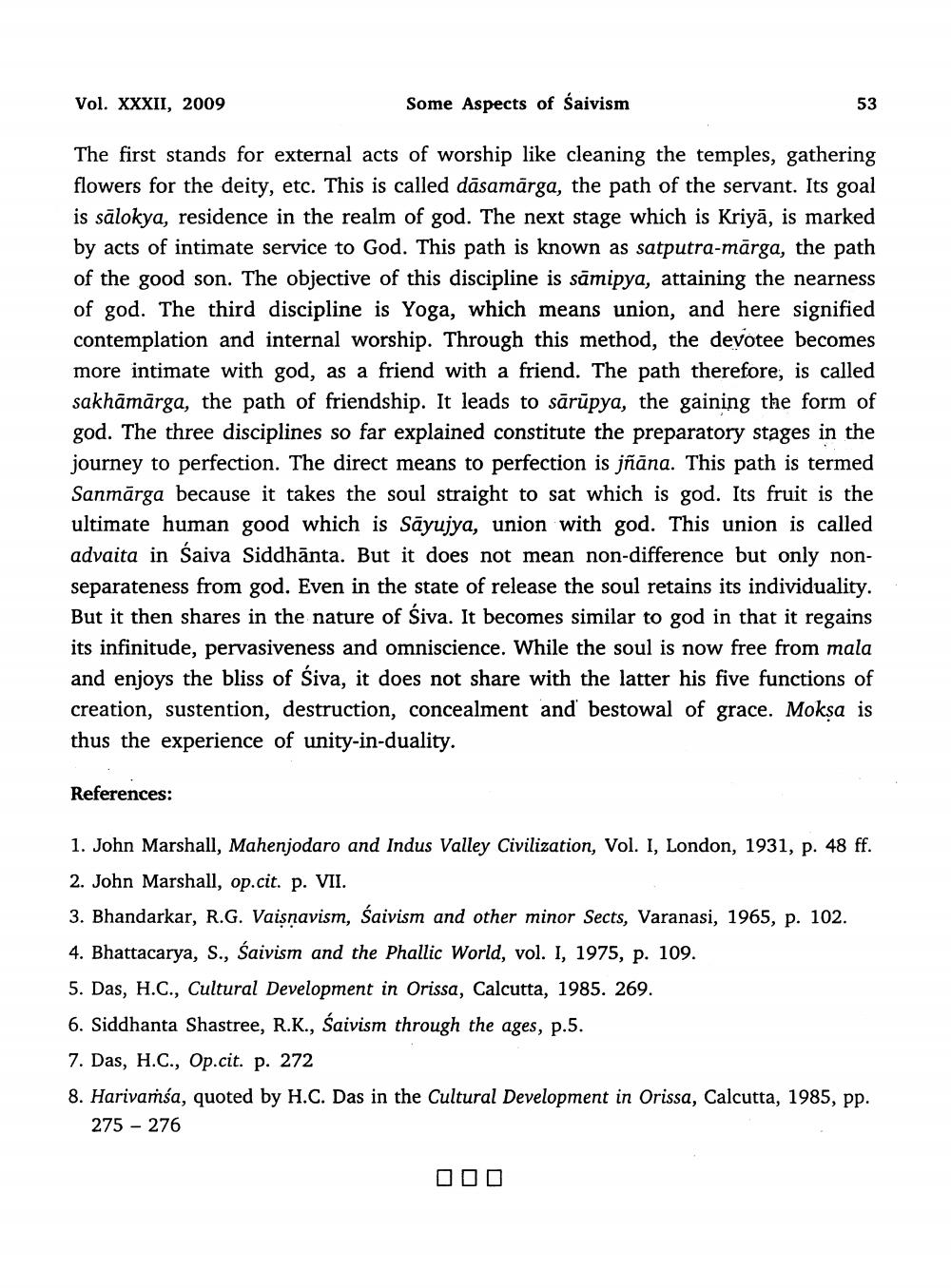________________
Vol. XXXII, 2009
Some Aspects of saivism
The first stands for external acts of worship like cleaning the temples, gathering flowers for the deity, etc. This is called dāsamārga, the path of the servant. Its goal is sālokya, residence in the realm of god. The next stage which is Kriyā, is marked by acts of intimate service to God. This path is known as satputra-marga, the path of the good son. The objective of this discipline is sāmipya, attaining the nearness of god. The third discipline is Yoga, which means union, and here signified contemplation and internal worship. Through this method, the devotee becomes more intimate with god, as a friend with a friend. The path therefore, is called sakhāmārga, the path of friendship. It leads to sārūpya, the gaining the form of god. The three disciplines so far explained constitute the preparatory stages in the journey to perfection. The direct means to perfection is jñāna. This path is termed Sanmārga because it takes the soul straight to sat which is god. Its fruit is the ultimate human good which is Sāyujya, union with god. This union is called advaita in Saiva Siddhānta. But it does not mean non-difference but only non
rateness from god. Even in the state of release the soul retains its individuality. But it then shares in the nature of Siva. It becomes similar to god in that it regains its infinitude, pervasiveness and omniscience. While the soul is now free from mala and enjoys the bliss of Siva, it does not share with the latter his five functions of creation, sustention, destruction, concealment and bestowal of grace. Moksa is thus the experience of unity-in-duality.
References:
1. John Marshall, Mahenjodaro and Indus Valley Civilization, Vol. I, London, 1931, p. 48 ff. 2. John Marshall, op.cit. p. VII. 3. Bhandarkar, R.G. Vaisnavism, śaivism and other minor Sects, Varanasi, 1965, p. 102. 4. Bhattacarya, S., Śaivism and the Phallic World, vol. I, 1975, p. 109. 5. Das, H.C., Cultural Development in Orissa, Calcutta, 1985. 269. 6. Siddhanta Shastree, R.K., Saivism through the ages, p.5. 7. Das, H.C., Op.cit. p. 272 8. Harivamsa, quoted by H.C. Das in the Cultural Development in Orissa, Calcutta, 1985, pp.
275 - 276
000




